Hello and welcome to our blog. Here, we talk about the risks that hide below the calm surface of lakes and ponds. We want to talk about a danger that is very dangerous to our pet friends today: blue-green algae. These bright colors may look innocent and even beautiful, but they hide a scary secret: they contain harmful chemicals that can hurt dogs very badly. Join us as we look into this scary trend and talk about how it hurts animals and give pet owners important advice on how to keep their pets safe from this unseen threat.
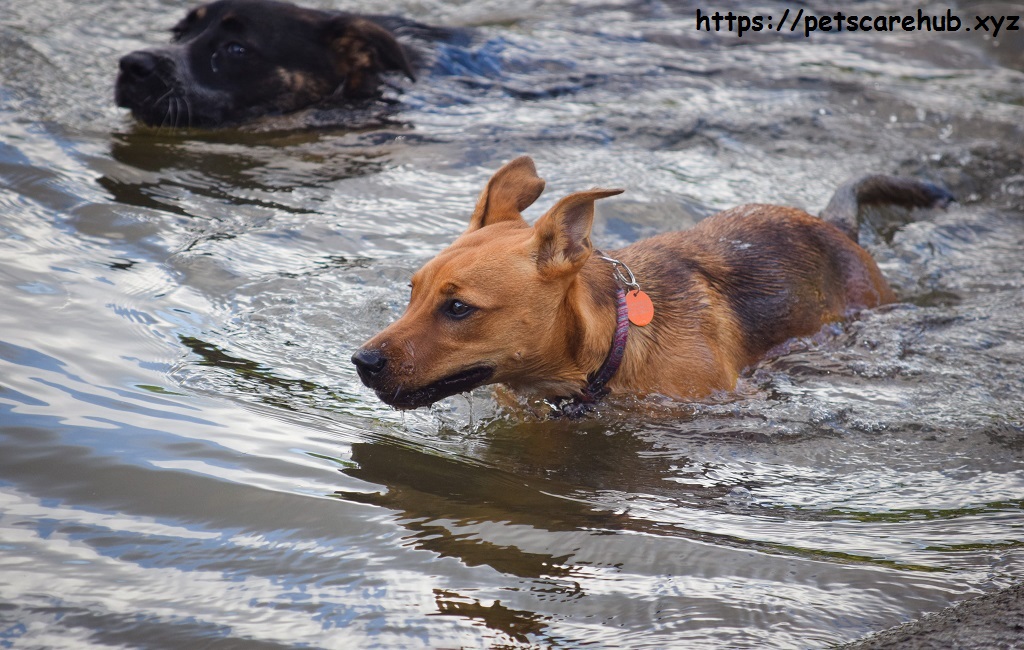
Get ready to travel the dangerous seas of blue-green algae with me, because I know that knowledge is power when it comes to protecting the people who bring us so much joy.
They are a type of bacteria that can be found in both freshwater and sea. They are also called cyanobacteria. They often grow best in warm, still water that has too many nutrients, like phosphorus and nitrogen. At first look, these algae might not seem dangerous. After all, they are a normal part of the marine environment and help make oxygen, so why would they be harmful? But some types of blue-green algae make poisons that are very bad for dogs and can kill them if they eat them.
One of the scariest things about blue-green algae is how quickly it can grow and cover the surface of lakes and ponds in thick mats or scum. The color of these spots could be green, blue-green, red, or brown. Organisms that make poison can also release microcystins into the water, which makes it hard to see what danger is below. The liver toxins microcystins are very strong and can make dogs’ stomachs hurt all the way up to their organs failing.
Because dogs like to explore and drink from bodies of water while doing things like swimming or playing fetch, they are unfortunately more likely to be exposed to blue-green algae. It is very bad for your health to drink even small amounts of dirty water.
Are you and your animal friend going to your favorite lake or pond to have a fun day in the sun? Everyone who owns a dog needs to know about the blue-green algae that live below the water’s surface before they go swimming. These beautiful flowers may look like they aren’t harmful, but they can be very bad for our beloved pets. Blue-green algae are a scary threat, and this blog post will go into detail about how it affects dogs. Take a seat, put on your detective hats, and let’s find out what’s really going on with this hidden danger!
Attention all dog lovers and people who like being outside! Do you know that our peaceful lakes and ponds hide a dangerous secret?
Finally, we need to find out the scary truth about blue-green algae and how it might hurt our pet friends. As summer comes, many of us rush to these beautiful bodies of water, but what we don’t know is that there is a quiet danger waiting below the surface. As we dive deep into the world of blue-green algae in this eye-opening blog post, we will look at how it hurts dogs and what we can do to protect our beloved pets. Are you ready to learn about an unseen danger that needs your attention? Because when it comes to protecting the people who bring us endless joy, knowledge really is power.
A Brief Look at Blue-Green Algae and How It Can Hurt Dogs
Blue-green algae, which are also called cyanobacteria, might not sound dangerous, but it can be very bad for dogs’ health. You can find these tiny living things in lakes, ponds, and other areas of water. Blue-green algae usually live in warm, nutrient-rich places where the water doesn’t move very much. They can quickly gather and make thick mats on the water’s surface.
Blue-green algae are important to marine areas because they make oxygen and feed some animals. However, some species can make toxins that are bad for both people and animals. One group that is especially at risk is dogs, because they often swim or drink from bodies of water without thinking.
What do blue-green algae mean?
Blue-green algae are made up of bacteria that make food from light. They have been around for millions of years. They come in many kinds and sizes and can be found in both freshwater and ocean all over the world. In spite of their name, blue-green algae are not algae but a type of bacteria.
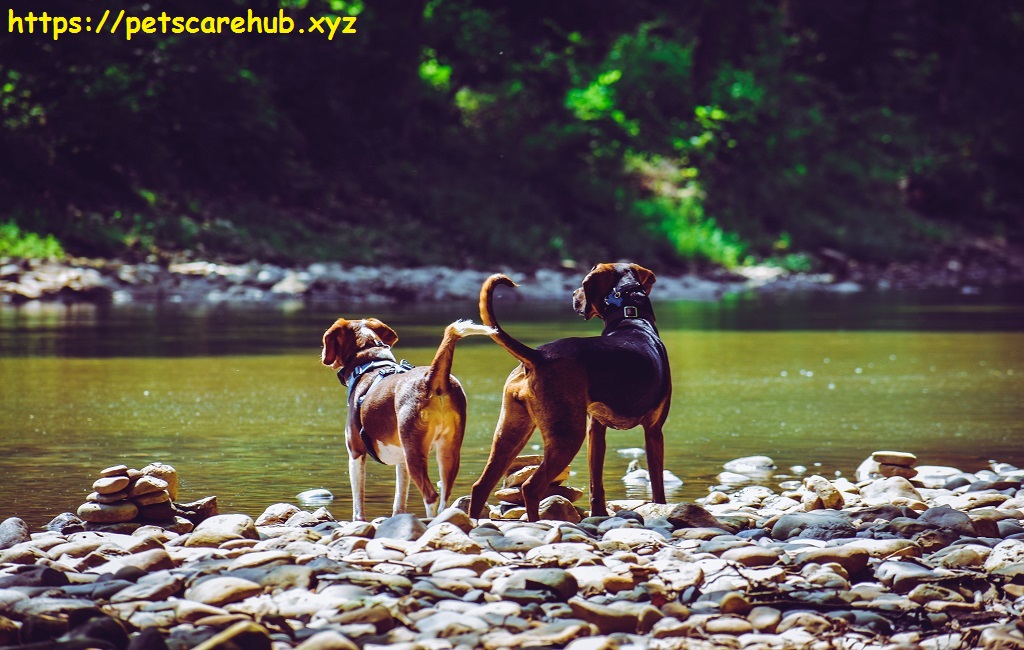
Blue-green algae come in thousands of different types. Some are harmless or even helpful, while others can do a lot of damage. The dangerous types usually come from two genera: Anabaena and Microcystis.
What harm does blue-green algae do to dogs?
When conditions are right (warm temperatures, still water), blue-green algae reproduce quickly through a process called “blooming.” While they’re doing this, they can make cyanotoxins, which are bad for both people and animals. These toxins can get into a dog’s body through drinking dirty water or licking their fur after swimming in water.
The most common poison that blue-green algae make is called microcystin. It can hurt the kidneys and the nervous system. If you are exposed to poisonous blue-green algae, you could vomit, have diarrhea, feel weak, have trouble breathing, have seizures, or even die.
What are the risks for dogs when they eat blue-green algae?
If you don’t treat blue-green algae toxins in dogs, it can get very sick or even kill them. Some of the organs and systems in the body that are affected by the toxins that these bacteria make are the liver, kidneys, breathing system, and nerve system.
Long-term contact to blue-green algae may cause liver disease and damage to the nervous system. But getting doctor care right away can greatly increase a dog’s chances of getting better.
How to Keep Your Dog Safe from Blue-Green Algae
To keep your dog safe from blue-green algae, do the following:
- If you can help it, don’t let your dog swim or drink from still bodies of water like lakes or ponds. This is especially important when it’s hot outside and blue-green algae blooms are more likely to happen.
- Check for warning signs: Keep an eye out for warning signs near bodies of water that say blue-green algae or recent blooms are present. Do not let your dog go into the water if you see any of these signs.
- Brush your dog’s fur and face with clean water after swimming. If your dog has been swimming in a body of water, do this as soon as possible to get rid of any possible toxins.
- Keep an eye on your dog. If you go to bodies of water where blue-green algae might be present, make sure your dog never drinks or plays in the water and always keeps an eye on them.
- If signs appear, you should take your dog to the vet right away. If you think your dog has been exposed to dangerous blue-green algae, you should take them to the vet right away, even if they don’t have any symptoms yet.
In conclusion, blue-green algae may be good for the environment, but some species can make poisons that are very bad for dogs’ health. It is important to be careful when near pools of water and to get medical help right away if you get exposed.
Where can I find blue-green algae?
Blue-green algae, which are also called cyanobacteria, are very small living things that can be found in both freshwater and saltwater. Blue-green algae are not a type of algae, despite its name. It is a type of bacteria that makes food by photosynthesis, just like plants do.
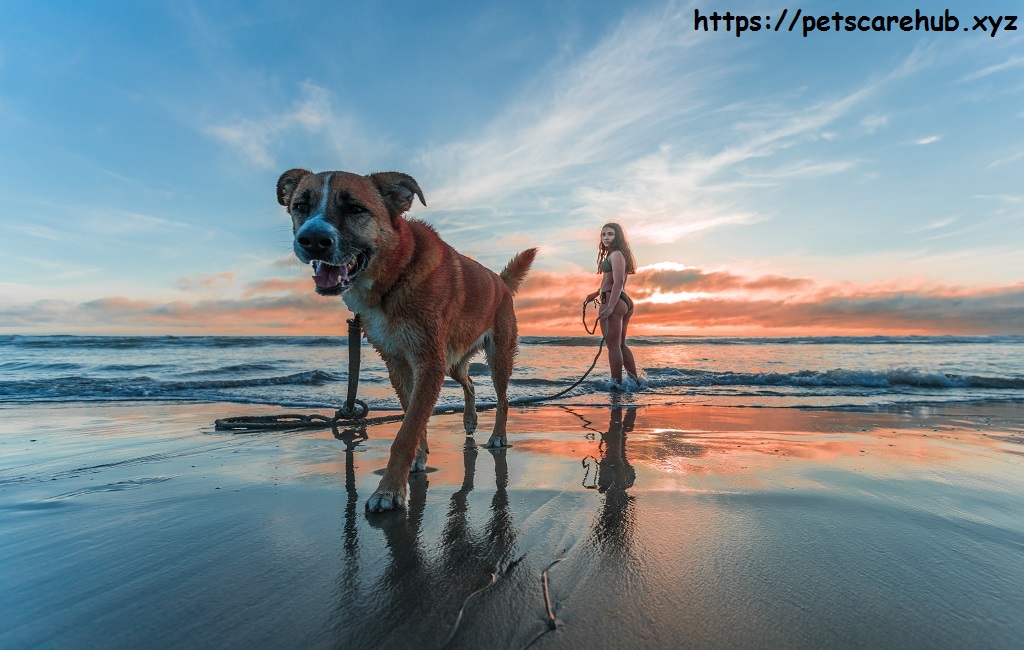
There are different kinds of water with blue-green algae, like lakes, ponds, rivers, and even the ocean. They do best in water that is warm, still, and full of nutrients like nitrogen and phosphorus. These nutrients can come from sources like fertilizer runoff from fields, sewage flow, or water that runs off of farms.
Blue-green algae populations grow very quickly in the warmer months of the year, when temperatures are high and there is a lot of sunshine. There are often too many blue-green algae on the surface of the water because of this, which is called an algal bloom. On the outside, these blooms can look like thick paint or scum and can be greenish-blue or even reddish-brown.
It’s not always easy to find algal blooms, and they can happen fast and without notice. It’s hard to tell where they will show up next because they move around with the wind or currents. Due to this lack of reliability, dog owners should be aware of the possible dangers of these blooms when they take their dogs to lakes or rivers to swim.
The algae blue-green can grow in both natural and man-made bodies of water, like outdoor pools and colorful waterfalls if they are not properly kept. For blue-green algae not to grow, these water features should be cleaned and cared for on a frequent basis.
In areas of water like lakes and ponds, you can find blue-green algae, which is also called cyanobacteria. Blue-green algae are not really algae, despite its name. It is a bacterium that looks and acts like both algae and bacteria.
This kind of bacteria does best in warm, nutrient-dense places, like areas of water that don’t move or move slowly. It often looks like a thick, blue-green scum on top of the water, and it might look like paint or pea soup that has been spilled.
Some types of blue-green algae are safe for people and animals, but others can make toxins that are harmful to both. Depending on how much you are exposed to these chemicals, they can hurt your health in many ways, such as by irritating your skin, giving you digestion problems, making it hard to breathe, or even damaging your brain.
Blue-green algae blooms are happening more often because of climate change and things people do, like farming waste and sewage flow. This is why dog owners should be aware of this secret danger when they take their dogs to lakes or ponds.
Blue-green algae can be found in a lot of different types of water. More people get it in the warmer months, when the weather is nice and there are lots of nutrients available. But if conditions are right, it can also show up when it’s cooler outside.
At lakes or ponds that dog owners want to visit with their pets, they should look out for signs that say blue-green algae is present. Another thing that dog owners should do is
When dogs are exposed to blue-green algae, it can be bad for their health?
This kind of bacteria is often found in lakes and ponds. It is called blue-green algae or cyanobacteria. Some types of blue-green algae are safe for people and animals, but others can make toxins that are harmful to both. Recently, there have been more reports of dogs getting sick or even dying after being around blue-green algae.
Blue-green algae can be bad for dogs’ health in a number of ways. The main danger comes from the poisons that some types of this bacteria make. Toxins like these hurt the liver and nervous system very badly. If dogs eat or come into touch with poisonous blue-green algae, they might get sick or even die. They might vomit, have diarrhea, be weak, have trouble breathing, have seizures, or even die.
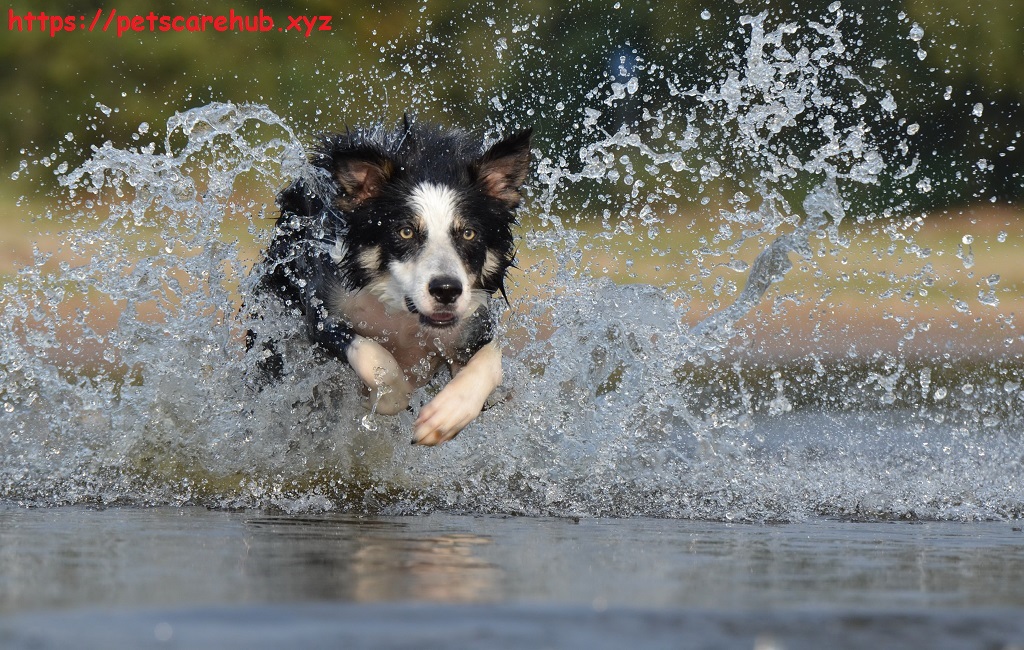
One reason why dogs are more likely to get sick from blue-green algae is that they like to swim in lakes and ponds where the bacteria grow well. Also, when they swim or play near the water, they might drink water that is tainted with blue-green algae. Even if a dog doesn’t come into close touch with the germs, they may still be exposed if they do something like scratch their fur after soaking in dirty water.
Another worry for dog owners is that without proper tests, it can be hard to tell the difference between safe and harmful types of blue-green algae. These bacteria can look like green paint or thick pea soup on the top of the water. It is often called “pond scum.” But not all forms make poisons that can be seen with the naked eye.
There is still a chance that your dog will be exposed to blue-green algae even if it doesn’t eat it. Dogs that swim in dirty water may breathe in the germs while they play or clean themselves, which can make their lungs hurt.
Dog owners should stay away from bodies of water that have blue-green algae growing on them and only swim in places where the amounts have been checked and found to be safe. If you think your dog has eaten or come into touch with blue-green algae, you should take them to the vet right away. It’s more likely that someone will fully heal if they take care of their symptoms right away.
Especially in the summer, dogs love to play and explore outside. Lakes and ponds are often great places for dog owners to go for fun things to do with their pet friends. Many people may not know this, though, but blue-green algae can also be dangerous in these bodies of water.
Cyanobacteria, which are blue-green algae, are tiny living things that can be found in watery lakes and ponds all over the world. When the water is warm and there are too many chemicals in it, these algae can quickly grow out of control, which can cause dangerous algal blooms.
These plants make poisons that are bad for both people and animals. On the other hand, dogs are especially at risk because they often swim in or drink from dirty water.
So what are the exact health risks for dogs that come from being around blue-green algae? How about we take a better look?
- Having itchy skin
Skin discomfort is one of the most common signs that a dog has been exposed to blue-green algae. In places where you touched the algae-filled water, this can show up as redness, itching, swelling, or even sores.
- Vomiting and having diarrhea
Blue-green algae can make dogs sick if they eat too much of it, causing them to vomit and have diarrhea. These pollutants can hurt the walls of a dog’s stomach, making it sick and making digestion difficult.
- Having trouble breathing
Sometimes, dogs can have trouble breathing after being exposed to blue-green algae.
Signs that your dog has been poisoned and when you should take them to the veterinarian
Blue-green algae can harm dogs in different ways, based on how much and what kind of poison they eat. The first signs may show up minutes to hours after contact, and if they aren’t handled right away, they can quickly get worse.
If you eat too much blue – green alga, you might vomit, have diarrhea, drool a lot, have trouble breathing, become weak, shake, and have seizures, become disoriented, or even die. These signs are brought on by the algae’s poisons, which hurt the dog’s stomach and nervous system.
It is important to remember that these signs are not just caused by blue-green algae poisoning; they can also be signs of other health problems. But if your dog has been in a body of water that has known or potential blue-green algae blooms, you should keep an eye out for these signs.
If you notice any of these symptoms in your dog after swimming or drinking from a lake or pond that may have blue-green algae blooms, you need to take them to the vet right away. If your dog has been poisoned by blue-green algae, you need to act quickly because the toxins can quickly damage internal systems in a way that can’t be fixed.
Also, some cats may have more serious responses, like passing out or going into a sleep, after eating or drinking a lot of harmful material. In these situations, you should get medical care right away.
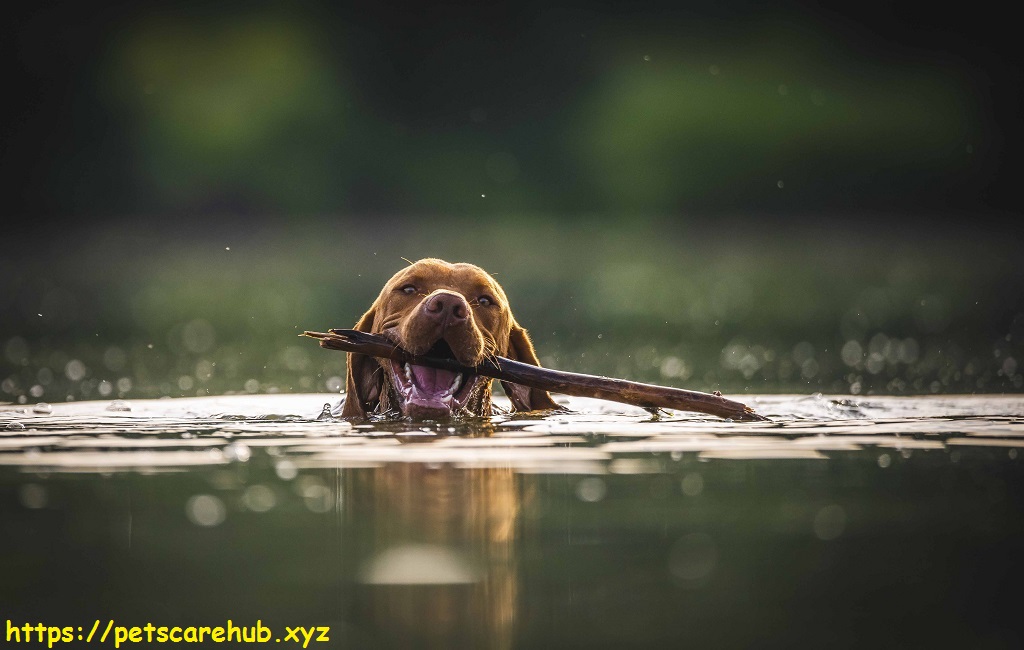
Also, people who own dogs should watch out for skin problems or spots on their dogs after they swim in bodies of water with blue-green algae blooms. When the algae touch the skin, it can cause swelling, itching, and inflammation, which can lead to contact dermatitis.
How to keep dogs from getting sick from blue-green algae
To keep your dog safe from blue-green algae poisoning, you should try to keep it from happening in the first place. These steps will make it less likely that you will get poisoned:
- Stay away from bodies of water that have blue-green algae blooms that you can see. The best way to keep your dog from getting blue-green algae is to keep them from swimming or drinking in lakes, ponds, or streams that have scum or a strong smell.
- Be careful where you let your dog swim. When you let your dog swim, look for a place with clear water that doesn’t have any algae growth.
- Wear a leash on your dog. If you are going near bodies of water where blue-green algae might be, your dog should always be on a leash so that they don’t drink contaminated water by mistake.
- Remove after swimming: As soon as possible after your dog has been swimming in any body of water, wash them well with clean water. Toxins that might be on their fur and skin will be washed off.
- Learn more about the bodies of water in your area. For example, know which lakes or ponds may have blue-green algae blooms at certain times of the year. Most of the time, you can find this information on the websites of state or city governments.
- Think about using a different water source. If you live near a body of water that has blue-green algae blooms in the past, you might want to give your dog bottled water or tap water instead.
In general, keeping your dog away from blue-green algae is very important for their health and well-being. Be proactive about keeping an eye on where they’re swimming and getting medical help right away if you see any signs of poisoning.
What you can do to keep your dog from eating blue-green algae
It is important to keep our pets healthy and safe from blue-green algae, which is also called cyanobacteria. These tiny creatures are growing in lakes and ponds across the United States, and their poisonous blooms are making dogs sick or even killing them if they eat or touch them.
Like a good pet owner, you should make sure your dog doesn’t eat blue-green algae by taking the right steps. You can do the following:
- First, you need to be able to tell the difference between blue-green algae and other things your dog might eat. Many times, these blooms show up on the top of water as greenish-blue scum. But they can also be brown or red. They might also look like paint or pea soup that has been spilled, and they might smell bad sometimes.
- Stay away from water that doesn’t move. Blue-green algae grow best in warm, still water like lakes and ponds with little water flow. You shouldn’t let your dog swim or drink from these kinds of bodies of water if you can help it.
- Keep an eye on your dog. If you’re near water that might have blue-green algae blooms, you should always keep a close eye on your dog. Due to their natural curiosity, dogs might want to investigate the strange-looking substance that is floating on the water.
- Stay in designated swimming areas. If you do let your dog swim in a lake or pond, make sure to stay in designated swimming areas where the water is tested regularly for blue-green algae and found to be safe for swimming.
- Bring clean drinking water: When you go hiking or spend time near lakes and ponds, you should always bring clean drinking water for your dog. This will keep them from drinking water that might be dirty.
- Wash your dog off after being near water. If you take your dog to the lake or pond for the day, you should wash them off with clean, fresh water. This will get rid of any possible poisons in their fur so they can’t eat it while they’re grooming themselves.
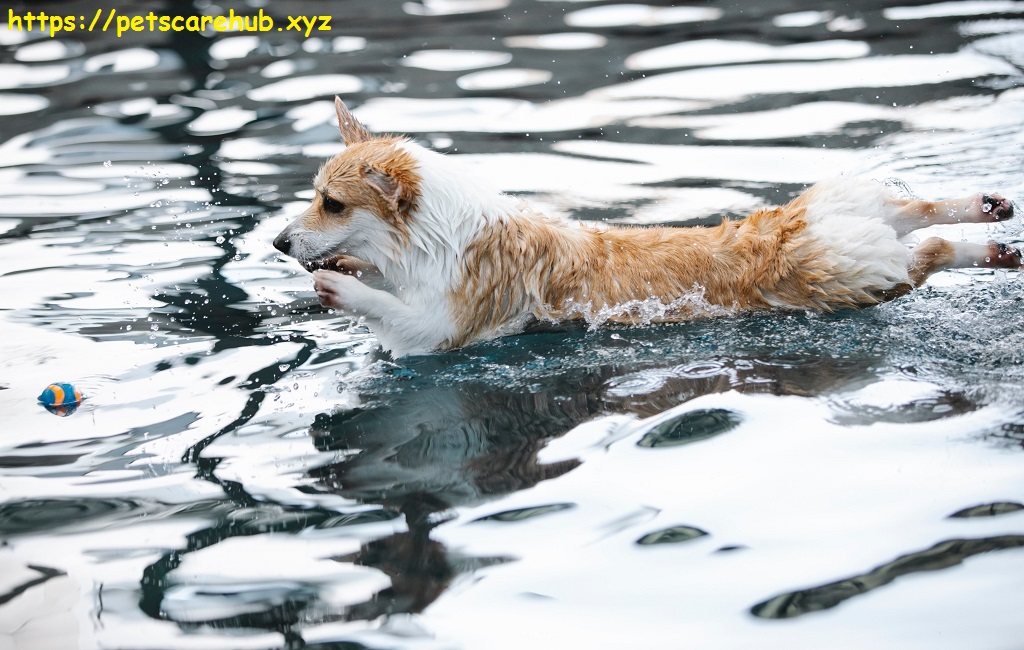
- If you’re not sure if a body of water is safe for your dog but still want to let them swim, you might want to consider using a muzzle to keep them from eating anything that could be harmful.
- Share your knowledge: Tell other pet owners in your area about the dangers of blue-green algae and how to keep their dogs safe.
Remember that you should take your dog to the vet right away if you think it has come into contact with blue-green algae. Some signs of ingestion are throwing up, diarrhea, feeling weak, having trouble breathing, and having seizures. You can help protect your furry friend from this dangerous threat by taking the right steps and learning about it.
There are ways to treat dogs that have been exposed to blue-green algae.
There may be more than one way to treat dogs that have been exposed to blue-green algae, depending on how bad their symptoms are and how much of the toxin they were exposed to. If you think your dog has eaten or come into contact with blue-green algae, you should take them to the vet right away.
- Get the dog out of the contaminated water right away: This is the first thing that needs to be done to treat a dog that has been exposed to blue-green algae. If your dog got wet while swimming, wash it off really well with clean water. This will help stop the body from taking in more toxins through grooming.
- Make you’re Dog Vomit: If you catch your dog eating blue-green algae, you should make them vomit as soon as possible so the toxins don’t get into their bloodstream. If you need to, your vet can show you how to properly make your pet vomit at home.
- Activated charcoal: If you can’t get your pet to vomit or if it’s been more than two hours since the exposure, your vet may give your pet activated charcoal. This helps get rid of any toxins that are still in the stomach and stops the body from absorbing them.
- IV Fluids: Dogs with severe symptoms like seizures or trouble breathing may need intravenous fluids to help flush out toxins and keep their organs working well.
- Medications: Depending on how bad the symptoms are, your vet may give you medicines like anti-seizure drugs, muscle relaxants, or medicines to stop vomiting and diarrhea.
- Support for the Liver: Blue-green algae toxins mostly hurt the liver, so your vet may suggest liver support supplements like milk thistle to help keep the liver healthy and repair it.
- Oxygen Therapy: If your dog is having trouble breathing, they may need oxygen therapy to help their lungs stay healthy until the toxins leave their body.
- Monitoring: Dogs that have been around blue-green algae should be closely watched for at least 24 hours after being around it. This lets your vet act quickly if the symptoms get worse or if new ones show up.
In the worst cases, dogs that have been exposed to blue-green algae may need to stay in the hospital and get a lot of supportive care until they get better. Finding and treating this poison early on are very important for your dog’s recovery. The best way to keep your dog safe from blue-green algae poisoning is to keep them from swimming in bodies of water where blue-green algae blooms are present.
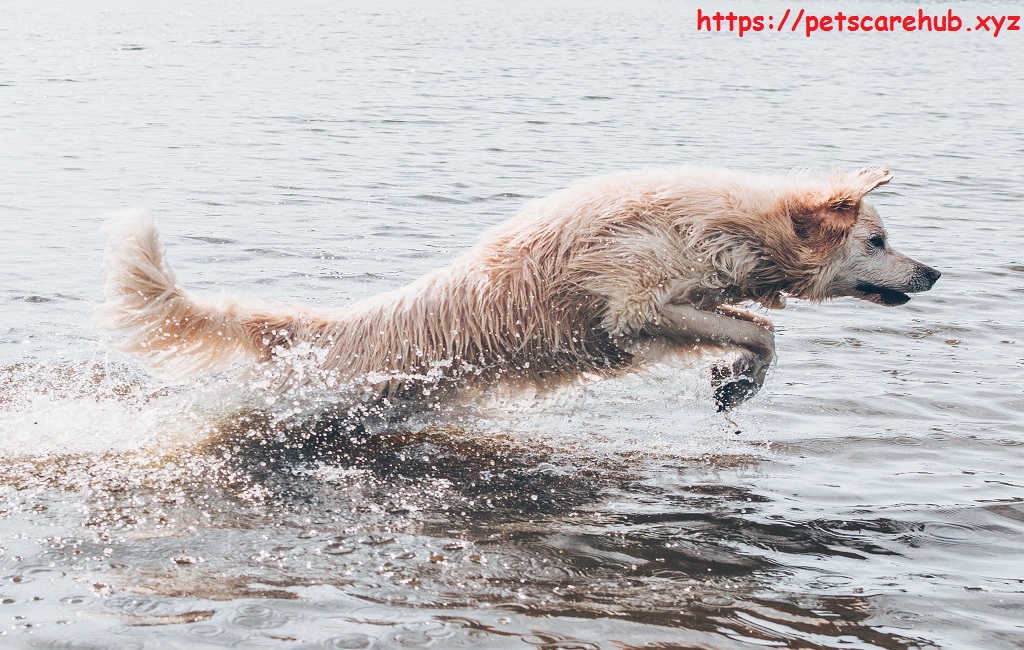
Alternatives to bodies of water that have blue-green algae in them
Green algae called blue-green algae can be very bad for people and dogs’ health when they live in bodies of water like lakes and ponds. People who own dogs should be aware of this hidden danger and take the right steps when letting their dogs swim or play in water that could be dirty.
But some dog owners who live near lakes or ponds or often visit places with them might not be able to stay away from all bodies of water. There are other things that can be done in these situations that can help lower the risk of being exposed to blue-green algae.
- Pick out a different place
One easy fix is to move the water activities your dog does to a different spot. If blue-green algae has been found in a lake or pond, don’t go there. Instead, go to a pool, stream, or river where the water quality is regularly checked and is safe for swimming.
- Use natural walls
You can keep your dog away from potentially harmful algae blooms by putting up natural barriers like rocks or logs if you have to go to a body of water that is polluted. While still letting them enjoy being near the dirty water, this will keep your dog from getting into it directly.
- After swimming, wash off
After swimming in any body of water, you should give your dog a good rinse off with clean tap water right away. This will help get rid of any toxins that are still on their skin and fur, making it less likely that they will eat something bad by licking their fur.
- Give people clean water to drink
Make sure you bring your dog some clean, fresh water with you so they don’t have to risk drinking from the dirty body of water. Also, this will help keep them from swallowing algae while swimming or playing in the water by accident.
- Life jackets are a good idea
An extra layer of protection against blue-green algae poisoning can be added to dogs that love to swim and explore bodies of water by wearing a life jacket. The life jacket also helps you keep an eye on your dog and quickly pull them out of the water if you need to.
- Look out for warnings
Before you go somewhere new, ask the park or local government if there are any advisories or warnings about blue-green algae in the area. This can help you plan your trip and stay away from water that could be dangerous.
- Get help from a veterinarian
If you think your dog has been around blue-green algae, you should take them to the vet right away. Poisoning symptoms can show up minutes to hours after exposure, and if they are not treated, they can be fatal.
People who have pets should be careful around blue-green algae in bodies of water and keep an eye out for it. Because you know about and choose these other
Making people aware of and speaking out about the
Making people aware of blue-green algae and how it hurts dogs is an important part of the fight against it. This part will talk about how important it is to teach others about this hidden danger in lakes and ponds and give you some ideas on how to speak up for our furry friends’ safety.
Making people more aware of a problem is the first thing that needs to be done to solve it. A lot of pet owners still don’t know how dangerous blue-green algae is, which is why it’s so important to get the word out. By teaching others about blue-green algae, we can help stop more dogs from getting sick or even dying from eating it.
Social media is one way to get people to pay attention. People in your family and friends groups who have pets will find this post or article helpful. Use #BlueGreenAlgaeAwareness or #SafeWaterForPets as hashtags to get more people to see your post. If you or someone you know has had a pet get sick from blue-green algae, you might want to tell your story to make the problem more serious.
Talking to the people in charge of maintaining lakes and ponds in your area is another effective way to make your case. They are responsible for making sure that public bodies of water are safe for people and animals. You can email or call them and tell them you are worried about the blue-green algae in the water in your community. It can also help to get together with other pet owners in your area who are also worried about the same thing.
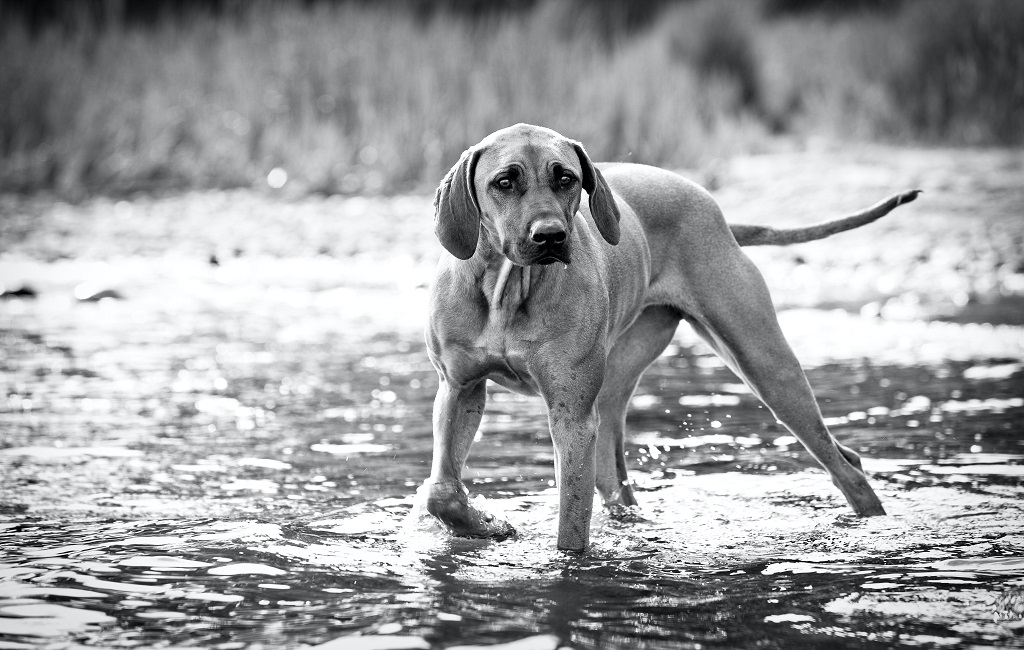
In addition, you can work with local animal shelters, veterinary clinics, or groups that care about pets’ health to hold workshops or seminars. These events can teach people how to spot blue-green algae and stay away from it, as well as what to do if they get exposed.
Finally, helping and giving money to groups and researchers working in this area can also make a difference. These groups study the effects of blue-green algae and try to find ways to keep pets from getting poisoned. You are helping them keep doing important work by giving to their cause.
Conclusion:
Raising awareness and speaking out are two important ways to help stop dogs from getting poisoned by blue-green algae. We can help keep our furry friends safe while they enjoy the outdoors by telling others about this danger and taking action. Prevention is very important, so always be careful around water and tell other people what you know.
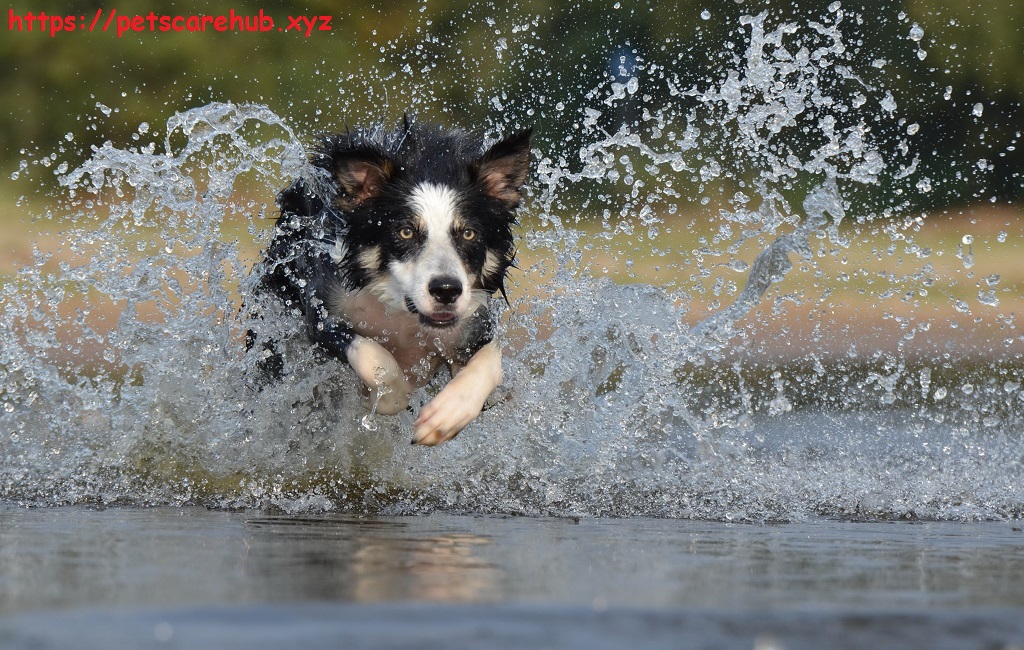
1 thought on “Blue-green algae and how it hurts dogs is a hidden danger in water 2023”